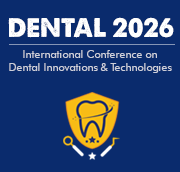Hypersensitivity and tooth decay
Hypersensitivity is a condition characterized by heightened sensitivity to stimuli such as temperature, pressure, and sound. The condition is commonly seen in people with dental cavities, cracked teeth, gum recession, and exposed root surfaces. These conditions lead to increased exposure of the dentin layer, which contains small tubules that are connected to nerves. When these tubules are exposed to the environment, they can become hypersensitive and cause pain upon contact with hot, cold, sweet, or acidic substances. Tooth decay is a common cause of hypersensitivity. Plaque and bacteria form on the tooth surface and produce acid that can erode the enamel and dentin, exposing the tubules. As the decay progresses, the dentin layer becomes thinner and more exposed, leading to increased sensitivity. In severe cases, the decay can reach the pulp and cause a severe toothache. Treatment for hypersensitivity depends on the cause of the condition. If the hypersensitivity is caused by tooth decay, the dentist may recommend a filling or crown to restore the tooth. If the sensitivity is due to gum recession, the dentist may recommend a gum graft or root surface treatment to protect the exposed root surface. If the cause is unknown or related to wear and tear, the dentist may recommend a desensitizing toothpaste or a fluoride gel to help relieve the discomfort. In addition to treatment, preventive measures are important to reduce the risk of developing tooth decay and hypersensitivity. These include brushing teeth twice a day with a soft-bristled toothbrush, flossing regularly, avoiding acidic and sugary foods, and visiting the dentist on a regular basis. By following these steps, individuals can reduce their risk of developing hypersensitivity and maintain healthy teeth and gums.

David Geoffrey Gillam
Queen Mary University of London, United Kingdom
Zvi Loewy
New York Medical College, United States
Khamis A Hassan
Global Dental Research Centre, Canada
Laurindo Moacir Sassi
Erasto Gaertner Hospital Cancer Center and Mackenzie Evangelical University Hospital, Brazil
Arnaldo Castellucci
Dr. Castellucci MD, DDS, Italy
Yasser Khaled
Marquette University, United States



Title : Efficacy of a biomin F toothpaste compared to conventional toothpastes in remineralisation and dentine hypersensitivity: An overview
David Geoffrey Gillam, Queen Mary University of London, United Kingdom
Title : Knowledge and attitudes of dental professionals in the evaluation of Molar Incisor Hypomineralisation (MIH): Awareness, diagnosis and treatment approaches: An overview
David Geoffrey Gillam, Queen Mary University of London, United Kingdom
Title : The coordinated triad of spatial temporal and biomechanical strategies managing the where when and how of shrinkage stress in bulk fill resin composite restorations
Khamis A Hassan, Global Dental Research Centre, Canada
Title : Dental treatment of 1500 young children under general anesthesia
Jaap Boehmer, Rijnstate Hospital, Netherlands
Title : Enhancing root canal success strategic use of orifice opener one step synthesis gels orifice barriers
Emmanuel Samson, Consultant Total Dental Care, India
Title : Dealing with peri implantitis: An insight to various treatment regimens
Preetinder Singh, Academy of Oral Surgery, United States